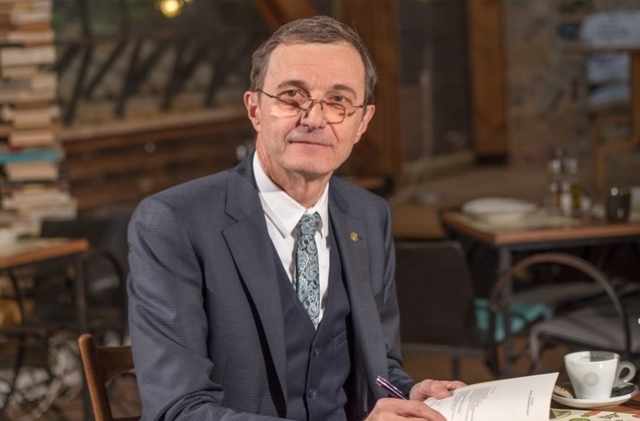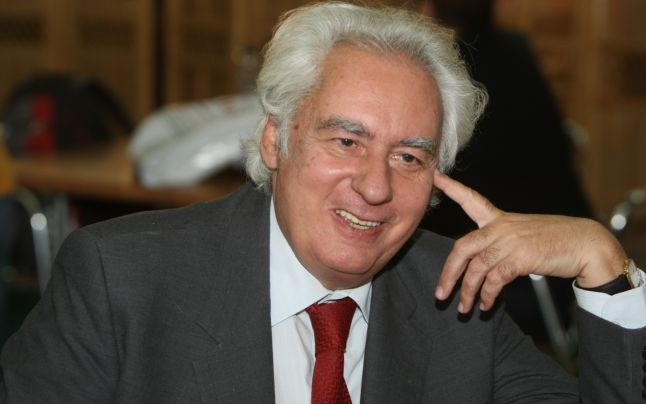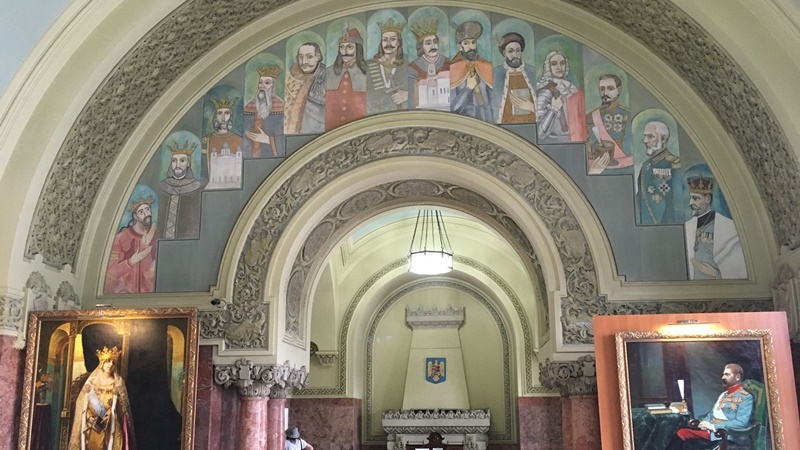[This post discusses the following works: Ioan-Aurel Pop: Semnificaţia anului 1918 pentru istoria românilor – câteva consideraţii. In Valentin Orga–Ottmar Traşcă–Liviu Ţîrău–Virgiliu Ţârău (eds.): Din modernitate spre contemporaneitate. Studii istorice dedicate lui George Cipăianu la împlinirea vârstei de 75 de ani. Argonaut, Cluj-Napoca, 2017. pp. 180–195. and Lucian Boia: În jurul Marii Unirii de la 1918: naţiuni, frontiere, minorităţi. Humanitas, Bucureşti, 2017. pp. 131.]
The centennial anniversary year commemorating the formation of modern Romania commenced on January 1, 2018. The occasion holds a pre-eminent position in the public life of the country. Beyond public personalities, historians also tend to agree about the significance of the anniversary, which is seen by many as an opportunity to further shape the discourses about the history and also the present of the Romanian nation state. The occasion has also brought to light important differences between competing perspectives which spring from divergent interpretations of both modern history and the functions of historiography. Ioan-Aurel Pop and Lucian Boia have both published theses on the Great Union of 1918, representing two opposing streams of contemporary Romanian scholarship. The importance of their contributions is partly due to their pre-eminent standing as public intellectuals. While Pop may be first and foremost a medievalist, as a member of the Romanian Academy and the rector of Babeş–Bolyai University he commands respect as both an academic and a top research policy bureaucrat. Boia is a former professor of Bucharest University, who rose to fame in the late 1990s with his book on Romanian historical myths. He is retired now, but continues to publish extensively and is one of the best known Romanian historians both at home and in the world. Their intellectual clash possesses dimensions that exceed those of a regular academic debate: at stake is the ability to orient mainstream historical discourses in the country, to shape the perspectives of Romanian intellectuals – in short: to control representations in the public sphere about history.
Ioan-Aurel Pop’s 2017 piece, The Significance of the Year 1918 for a History of Romanians – Some Observations may be short (barely filling 15 pages), but it contains a set of key theses and ideas. Of these, I present five here as especially relevant for an interpretation of the conflict outlined in the previous paragraph. The first thesis posits that Romanian efforts towards national unity represented a universally supported national desire and program. Pop states that in 1918 the majority of Transylvanian Romanians clearly preferred the unification with Romania as opposed to remaining within the boundaries of the Austro-Hungarian Monarchy. They had lost faith in being accorded the conditions required for sustaining their nation-building within the old empire. (184-185.) The Romanian elites of Transylvania had engaged in the program of nation-building around 1848-49, first aiming at emancipation, but eventually reorienting their goals towards unification. It was this sustained effort that led to the popular assembly at Alba Iulia/Gyulafehérvár, an event that represented the general will as much as it was possible at the time. (185-187. and 192.)

Ioan-Aurel Pop, historian and rector of BBU at Cluj-Napoca
The second thesis highlights the prevalence of the majority principle in the state formation process. The author emphasizes that the accession to Romania by the Romanians of Transylvania occurred in accordance with the Wilsonian principles of democracy and national self-determination. As Pop writes, “In view of the principle of self-determination, it was the Romanian community that, as the majority, had the right to decide about the fate of the historical province known as Transylvania.” (187.) The clear decision by the Romanian majority was sufficient to confer legitimacy on the secession from Hungary even without a referendum, as “the assembly of Alba Iulia took on the role of the referendum of the absolute majority of the population [the Romanian community]”. Pop directs the readers’ attention to the fundamental role played by the majority principle in the formation of Greater Romania: the nascent larger state relied on an absolute majority of Romanian citizens, who made up about 75% of its population. It should, therefore, properly be considered a nation-state. (182-183.)
Pop considers the international recognition of the border changes similarly important. He repeatedly stresses that the peace conferences and the frameworks of international treaties that ended the two World Wars all acknowledged the self-organizing character of the Romanian movements outside of the former borders, and the way these organizations assumed power locally. Similar recognition was granted to the unification process itself. These, in the eyes of the international public, constituted manifestations of the popular will and were formally accepted as such. (182-183. and 191-192.)
Fourth, the author describes the success of the unification movement as an instance of international justice. He positions the democratic and emancipatory national liberation movement as one among the many legitimate and progressive movements of the day fighting against imperial oppression. (191.) The unification of 1918 is accordingly interpreted as a form of redress, as “avenging” centuries of discrimination, and which, despite any abuses of power in later decades, constitutes “an instance of historical justice.” (188-189.)
Finally, Pop embeds the event and its anniversary into the dual arenas of memory politics and geopolitics. He accepts that interpretations of the events will vary, but reminds readers that divergent interpretations and unfounded generalizations can be instrumentalized by anti-Romanian propaganda. “Reinterpretations” and attempts at “demythicizing” figure prominently in the toolboxes of nationalistic and chauvinistic revisionism and Bolshevik internationalism. (184.) They are especially closely linked to Hungarian and Soviet challenges to the status quo. (193.) It is no accident that such critiques have started reappearing on the eve of the centennial, receiving additional momentum from the resurgence of Hungarian nationalism (as warnings by European organizations attest) and the ongoing Russian-Ukrainian conflict, which has undermined the security of borders. (193.) This, the fifth, thesis argues that as the formation of Greater Romania is properly understood as a democratic national process, the challenges to this interpretation are driven by ideologies that seek, willingly or unwillingly, to subvert Romanian interests and the prevailing political ethic that considers currently existing nation states to be natural and moral forms of political self-organization.
Lucian Boia’s latest volume, Around the Great Union of 1918: Nations, Frontiers, Minorities was also published in 2017. It is a short text, linked in multiple ways to Boia’s 2014 book, Winners and Losers: Reinterpreting World War I. While the new tome focuses on the year 1918 in Romania, it contextualizes the end of the Great War through extensive references and comparisons, both spatial and temporal. It discusses the long-term processes of nation-building and state formation, considering cases from both the Western and the Eastern halves of the continent. (23.) It also provides an especially detailed account of the processes of ethnic homogenization that have impacted the once colorful ethnic map of Eastern Europe. (97-116.)

Lucian Boia, historian, professor emeritus of the University of Bucharest
The theme of national unity figures prominently in Boia’s text as well. It is discussed, however, more as the myth of unity which, in keeping with the author’s trademark approach, is subsequently “deconstructed”. Boia concludes that this myth has been a product of Romanian nationalism, nationalist historiography and especially of the national-communist ideology that turned the question of “Romanian unity into a dogma”. (7.) He states that Romanians were prepared, by 1918, for “the great act of unification”, but then proceeds to add further nuance to the thesis. (9.) Boia points to the existence of cleavages within Romanian elites (including a pro-German stream) and earlier plans seeking to reform the dual monarchy. (14.) These add to and complement the discussion, included in Winners and Losers, of the dilemmas that Transylvanian Romanians had to grapple with. The image offered of the nascent present-day Romania includes the forces and pillars of unity as well as ethnic, regional and other decentralizing agendas. (10.) Boia also remarks that, in the end, Bucharest failed in its quest to integrate minorities, and even the integration of Bessarabian Romanians remained incomplete. (95-96.) Despite the above caveats, the author does not challenge the grounds for celebrating the centennial anniversary, nor the legitimacy of keeping “a dose of mythology” alive. (15.)
Boia also subjects the principle of national self-determination and its application to critical analysis. In his assessment, while 1918 did seem to bring the triumph of democracy and the self-determination of peoples, this thesis needs to be qualified. The reasons include first and foremost the ambiguities surrounding the categories of “people” and “nation”. (65. and 91.) The popular assembly at Alba Iulia can in fact be regarded as reflective of the majority opinion among Romanians in Transylvania. A “regular” referendum would have likely produced the same outcome. At the same time, if the whole of Austria-Hungary is considered, many other border change scenarios become possible. In sum, “the major territorial changes occurred without the ‘completely inclusive’ participation of the local populations in the process of decision-making.” It was instead “the decision by representatives of the ethnic majority … and finally the conclusions of the Paris peace conference … that codified the territorial shifts that had already taken place.” (92.)
With regard to the territorial demands towards Hungary, Boia states that the regions in question had an undeniable, but not overwhelming Romanian majority: in some counties and townships, Hungarians or Germans were the largest ethnic group. (79-80.) The borders were drawn, in the end, consistently to the detriment of Hungary, resulting in the separation of local Hungarian majorities along the Serbian, Slovakian and Romanian borders and in the case of the Szeklerland. (88-89.) As to the question whether Romania constituted a nation state or was, in fact, a multiethnic state, Boia argues that the answer depends on the perspective. While Romanians made up the absolute or at least relative majority in every region of the country, of the 90 counties, 10 had non-Romanian majorities. (86-87.) National self-determination was also not a principle equitably enforced: the nation states turned out to be “not very welcoming hosts” towards their minorities. Homogenizing policies led to a decrease in the numbers of minorities almost everywhere. (97.)
In his most recent work, Boia also continues his ongoing critique of nationalist historiography and historicizing narratives. He references the multiplicity of perspectives, the complexity of phenomena and contingency as factors that undermine the moralizing, teleological and mythologizing grand récits. (5-19.) Interrogating outcomes of World War I, often interpreted as “necessary” consequences of the war itself, he assumes a position of doubt. This tendency towards focusing on contingency is also apparent in his assessment of the emerging political order as pre-ordained and natural. His text juxtaposes, for instance, the Hungarian and Romanian lines of argumentation during the Paris peace conference, emphasizing their similarities, and also reminds the reader that “Hungary lost all that it could have lost – and more.” (81-87.) Historical alternatives also figure prominently in the analysis: the book presents in some detail the plans to reform the Austro-Hungarian Empire. (32-49.) Beyond federalization, determining borders through referenda appears in the text as representing an option for shaping a different – perhaps better – postwar order. (91-95.)
The two texts by Ioan-Aurel Pop and Lucian Boia differ significantly. A fundamental difference concerns the status and legitimacy of a normative national grand narrative, which benefits the political community. Pop believes in the possibility of such discourse, while Boia is pessimistic regarding its potential benefits. Pop’s piece is steeped in the tradition of historiography that considers its subject matter to constitute an academic discipline on the one hand, and to have a role in building national cohesion and underpinning the foundations of the state’s identity on the other. According to this perspective, it is a legitimate enterprise to interpret the past from the vantage point of one’s national community and nation-state. It is a logical consequence of this premise that undermining the national narrative of the Great Union is both harmful and anti-Romanian (beyond being inspired at least in part by foreign interests). In contrast, Lucian Boia aligns himself with the international trend of unmasking grand récits as constructed and history as contingent. He refuses to consider such narratives as either necessary for the community or above academic criticism. In keeping with his earlier texts, the demonstration of the relative character of historical truth claims (a result of the multiplicity of contexts and perspectives) is positioned as a chief aim of his latest volume, as well. While recognizing that trends and even recurring cause-and-effect relationships do shape history, his text focuses on highlighting historical contingency and the impossibility of foretelling its course.
A comparison of the contributions by the two eminent Romanian historians helps in focusing attention on the fundamental question regarding to status of historical research. To what extent does it constitute scientific activity (oriented towards “Erkenntniss” – the better understanding of the world) or should it be seen as an instrument of consolidating communities (in state- and/or nation-building processes)? Perhaps it is also legitimate to see it as a form of entertainment that belongs with other forms of popular culture and spans a vast range of forms from public history to computer games. Neither definition should be discarded without consideration, and often all three aspects are present in a specific historiographical achievement. A more practical question would be to inquire about how the three aspects mix, which among the three emerges dominant, and what consequences this dominance entails. When interpreting historiographical debates in Romania, these discussions should not be understood as mere vehicles of historical judgment opposed to Hungarian national narratives. It is more productive to observe these efforts by members of the academic community and specialists in the field of humanities as they struggle to shape contemporary roles and discourses for themselves. In doing so they are facing much the same set of dilemmas that their colleagues encounter in Hungary and elsewhere. As these are shared questions, reflecting on them contributes to recognizing the social and cultural embeddedness of our historiographical vantage points, as well as our similarities often masked by superficial difference.






